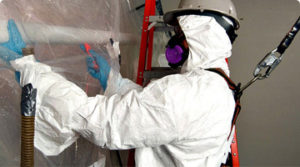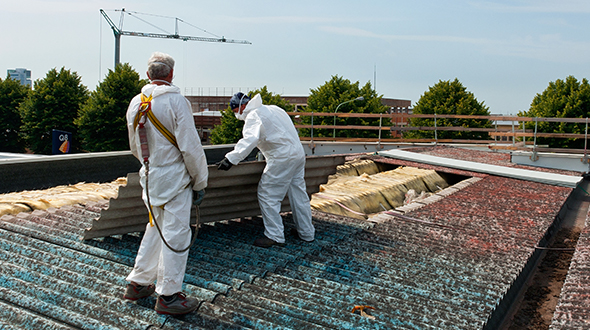Long-Term Effects Of Asbestos Roof Removal Hazardous Materials & Disposal Services
Asbestos risk assessment is a crucial process in ensuring the security and health of individuals doubtlessly exposed to asbestos. Asbestos, a naturally occurring mineral fiber, was extensively utilized in construction and insulation materials because of its fire-resistant properties and energy. However, its inhalation can lead to extreme health points, including lung cancer and asbestosis.
The key part of an asbestos risk assessment is identifying places the place asbestos may be present. Common areas embrace older buildings, faculties, and industrial services, many of which have been constructed earlier than the widespread regulations on asbestos use got here into effect. Identifying materials that may contain asbestos is important to find out the level of risk.
When conducting an asbestos risk assessment, it's important to grasp the forms of materials that typically contain asbestos. These can embrace insulation, roofing shingles, ground tiles, and textured paint. All of those materials pose significant risks if they are friable, which means they are often simply crumbled or pulverized into mud.
Safety Training For Asbestos Roof Removal Workers Safe, Reliable And Experienced Removal Services

Visual inspections are a crucial first step in assessing the potential risk of asbestos exposure. Trained professionals look for visible signs of asbestos-containing materials. However, visual inspections alone are often inadequate. Air monitoring and sampling may be essential to substantiate the presence of asbestos fibers.
After figuring out potential asbestos-containing materials, the subsequent step includes evaluating the condition of these materials. If they're intact and undisturbed, the chance may be lower. However, damaged materials requiring repair or removal pose a higher risk and must be handled promptly.
An correct risk assessment may also consider the frequency and length of exposure. Individuals who work in or close to areas with potential asbestos risk have to be notably vigilant. Understanding how usually and for the way long exposure would possibly happen is critical in evaluating the extent of the danger.
Asbestos Roof Removal Timeline In Sydney Testing, Removal & Disposal Of Asbestos
Regulatory requirements also play a pivotal position within the analysis process. Various agencies, such as the Environmental Protection Agency (EPA) and the Occupational Safety and Health Administration (OSHA), present guidelines that assist form risk assessments. Adhering to these standards is important for safeguarding human health.
If asbestos is detected and deemed at risk, a management plan will be required. This plan could contain encapsulation, which seals the asbestos material and prevents fibers from becoming airborne, or full removal, which tends to be a more pricey and disruptive option. The selection is dependent upon the sort of material, its condition, and the chance of disturbance.
Training and educating these concerned in the risk assessment process can be key. Workers should pay attention to the hazards associated with asbestos exposure and educated to identify potential risks. Proper training ensures that safety protocols are followed, reducing the chance of exposure.
Furthermore, periodic re-assessment is necessary in environments where asbestos is current. As circumstances change over time, materials could degrade, affecting the level of risk. Regular monitoring helps to keep up a secure environment and permits for well timed intervention when wanted.
Importance Of Documentation In Asbestos Projects Best & Cheap Removal Services Available
Involving stakeholders, including property house owners, employers, and workers, is crucial for effective risk management. A collaborative approach to understanding and mitigating asbestos risk fosters a tradition of safety and awareness. Open communication can significantly scale back the possibilities of exposure and health points arising from asbestos.

Overall, the importance of an asbestos risk assessment cannot be overstated - Environmental Restoration After Asbestos Removal. It not solely protects particular person health but also contributes to broader public health safety. As awareness of the hazards related to asbestos continues to develop, compliance with risk assessment best practices turns into even more important
Best Practices For Asbestos Roof Removal In Sydney Cost Guide For Asbestos Removal
Strategies that emphasize prevention and mitigation of asbestos exposure can result in safer work and living environments. Efforts to educate and inform the basic public concerning the risks related to asbestos contribute considerably to a extra health-conscious society.
In conclusion, the process of conducting an asbestos risk assessment is integral for safeguarding people from potential hurt. Understanding the presence and condition of asbestos-containing materials is paramount in assessing risks. Continuous monitoring and stakeholder engagement improve the effectiveness of management methods. As regulatory frameworks evolve and awareness grows, proactive measures against asbestos-related risks will assist in fostering safer environments for all.
Asbestos Roof Removal Best Contractors In Sydney Removal & Replacement Of Roof Asbestos
- Conduct a thorough inspection of buildings constructed earlier than the 1980s, as these are most likely to include asbestos-containing materials (ACMs).
- Utilize certified asbestos professionals to gather samples and perform laboratory testing for accurate identification of asbestos presence.
- Assess the situation of recognized ACMs, noting any damage, friability, or put on that will enhance the risk of asbestos fiber release into the air.
Impact Of Weather On Asbestos Roof Removal Costs Associated With Removal And Replacement
- Create a detailed inventory of all asbestos materials within a property, including their places, varieties, and quantities for future reference throughout management.
- Implement a management plan outlining procedures for controlling asbestos risks, together with common monitoring and maintenance of ACMs.
- Educate workers and tenants concerning the potential dangers of asbestos exposure and the importance of adhering to safety protocols on-site.
Community Awareness About Asbestos Roof Dangers Costs Associated With Removal And Replacement
- Ensure compliance with native and federal regulations concerning asbestos dealing with, removal, and disposal to mitigate legal and health liabilities.
- Evaluate the encircling environment and activities that might disturb ACMs, similar to renovations or demolitions, and develop specific safety measures.
- Plan for emergency response procedures in case of accidental disturbance of asbestos materials, guaranteeing that all personnel are skilled in quick containment and reporting protocols.
Asbestos Roof Removal Machinery And Tools Asbestos Roof Maintenance Services
- Conduct regular reviews and updates of the chance assessment to click to read more accommodate any adjustments in building occupancy, use, or situation important link of asbestos materials.
What is asbestos risk assessment?undefinedAsbestos risk assessment is a systematic evaluation process to identify the presence of asbestos-containing materials in a building, assess the risk they pose to health, and determine appropriate actions to manage or remediate any potential hazards.
Why is an asbestos risk assessment necessary?undefinedAn asbestos risk assessment is crucial to protect occupants and staff from potential exposure to asbestos fibers, which can result in serious health conditions, together with lung cancer and asbestosis. It helps guarantee compliance with safety regulations.
How is an asbestos risk assessment conducted?undefinedThe assessment entails inspecting the property for materials that will contain asbestos, sampling these materials for laboratory evaluation, and evaluating the degree of risk based mostly on the condition and placement of the asbestos.
Who should carry out an asbestos risk assessment?undefinedA certified professional, typically an accredited asbestos inspector or an industrial hygienist, ought to perform the assessment. Their experience ensures accurate identification and risk analysis.
Removal Of Asbestos Roofing Materials Removal Of Asbestos Roof In Area
What are the signs that an asbestos risk assessment is needed?undefinedSigns include the presence of building materials put in earlier than the Eighties, visible harm to materials like insulation or roofing, or when renovations or demolition are planned in older constructions.
How often ought to asbestos risk assessments be updated?undefinedRisk assessments must be reviewed and updated each three to five years or after any significant renovation, harm, or disturbance of asbestos-containing materials. Frequent updates ensure ongoing safety.
What should I do if my property has recognized asbestos?undefinedIf asbestos is identified, it is important to administer it appropriately. Options embody encapsulation (sealing) or removal by licensed professionals, depending on the material's situation and location.
Understanding Asbestos Roof Hazards Removal And Disposal Of Asbestos
What is the cost of an asbestos risk assessment?undefinedThe cost can vary primarily based on factors such because the property's dimension, the complexity of the assessment, and local charges, nevertheless it typically ranges from a number of hundred to a couple thousand dollars. - Asbestos Roof Removal Health Risks
Are there legal requirements for asbestos risk assessments?undefinedYes, many jurisdictions have regulations mandating asbestos risk assessments in industrial buildings and during renovations or demolition activities, to guard public health and safety.
Legal Requirements For Asbestos Removal In Nsw Removal & Replacement Of Roof Asbestos
What are the potential consequences of not conducting an asbestos risk assessment?undefinedFailing to conduct an asbestos risk assessment can result in legal penalties, exposure of occupants to harmful asbestos fibers, and doubtlessly costly remediation after an unexpected release of asbestos.